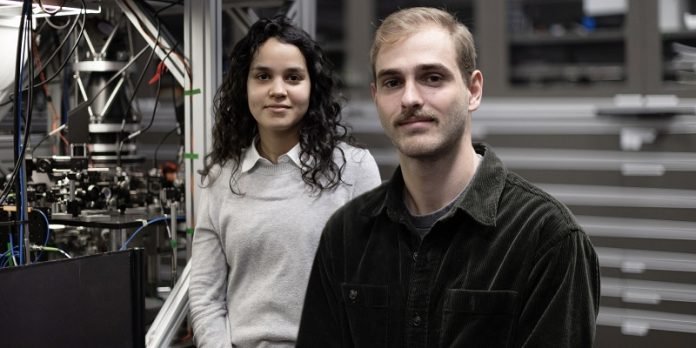
You know how everything feels super slow when you’re watching a slow-motion video?
Imagine if we could do the same for things that happen way too fast for us to see.
Scientists at the University of Sydney have done just that, but not for a jumping cat or a bursting balloon.
They used a quantum computer to slow down a chemical reaction by a whopping 100 billion times!
Why is this a big deal? Well, chemical reactions are the building blocks of everything. They help make medicines, they give us energy from the sun, and they’re even at the heart of how our eyes see things.
Understanding these reactions could help us make better medicines, find new ways to get energy, and even learn more about how pollution or the ozone layer works.
Vanessa Olaya Agudelo, a Ph.D. student and one of the lead researchers, said, “We are peeking into a world of materials and energy that we’ve never seen so clearly before.
This could revolutionize many things, from creating new materials to understanding how light interacts with stuff like smog or the ozone layer.”
In the world of chemistry, there’s a thing called a “conical intersection.” Think of it as a busy traffic junction where atoms and molecules swap energy really quickly.
These intersections are important for things like how plants use sunlight for energy and how our eyes see things. But they happen way too fast for us to understand what’s going on.
So, how did they do it? The scientists used something called a “trapped-ion quantum computer.”
It’s a super-advanced computer that works on the principles of quantum mechanics, which is the science of things that are really, really small. They used this quantum computer to slow down the fast-paced action so they could take a close look.
Olaya Agudelo said, “In nature, these reactions are over in a flash. We’re talking about a quadrillionth of a second! But with our quantum computer, we made that stretch to a few milliseconds, which is a time we can actually understand.”
Dr. Christophe Valahu, another lead author, added, “It’s like using a wind tunnel to simulate how air moves around a plane’s wing, but way more advanced. And it’s not a rough guess; it’s a real-time, slow-motion view of quantum actions that were too fast to see before.”
Before, nobody could see these super-fast reactions happen. But with this quantum computer, scientists could finally see the details. And the best part? This is just the beginning.
Ivan Kassal, who led the research team, said, “This is only the tip of the iceberg. We’re going to understand things that happen super fast, and that opens up new doors for science.”
Dr. Ting Rei Tan, who also worked on the study, summed it up: “This is a team win. People who study tiny particles teamed up with people who study how chemicals behave, and together we cracked a big question that’s been puzzling scientists for decades.”
So, the next time you see a plant soaking up the sun or marvel at how your eyes can see in different light, remember: scientists are using the world’s coolest computers to understand the fast-paced magic behind it all, in slow motion.
Their research findings were published in Nature Chemistry.
Follow us on Twitter for more articles about this topic.



